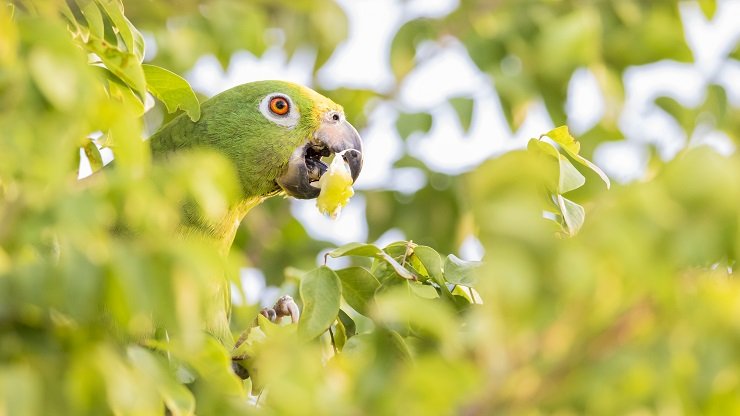
With any project or investment we’re involved in, the topic of beneficiaries always surfaces some way or the other. Who is going to benefit aside from the original investor? For me, as a birder, a naturalist, and a general lover of all things natural – the ideal beneficiary is nature.
Any project I am involved in, the overarching goal is for nature to benefit. Whether it is birding tourism or simply spreading awareness about biodiversity, it is always with the aim of getting us humanoids to treat nature a little (ideally, a lot) better.
One of my main projects has been our yard here at home. A brief personal digression: I moved back into the house I grew up in back in 2014, my parents vacated at the end of 2016. Since then, I began a wholesale rewilding of the yard. Much of it for most of my life was lawn – to me lawn was a symbol of wastage. Now I’m no gardener – but I also trust the natural process. The first thing I did was let the yard run wild, much to the chagrin of my neighbors. Each time I would cut the grass, I would inspect for new and interesting growth, selectively leaving some patches to propagate. As a rule, any tree which sprung up at the fenceline was left alone – as it was highly likely it was planted there by bird droppings. With that logic those trees, if left to grow, should produce something of use to at least one or two species of birds.

A Yellow-crowned Parrot digs in. This, as well as all the other images in this post, were all made at home.
After a few years of these habits, we began to see the effects of our efforts. As a child, I was aware of a multitude of birds, I distinctly remember Spectacled Thrushes, Tropical Mockingbirds, even a Short-tailed Hawk I saw one afternoon as I returned from elementary school. It’s been some years since I’ve seen any Short-tailed Hawks as the entire valley is now overrun with concrete – but I’m trying my best to create some sort of oasis for any species.
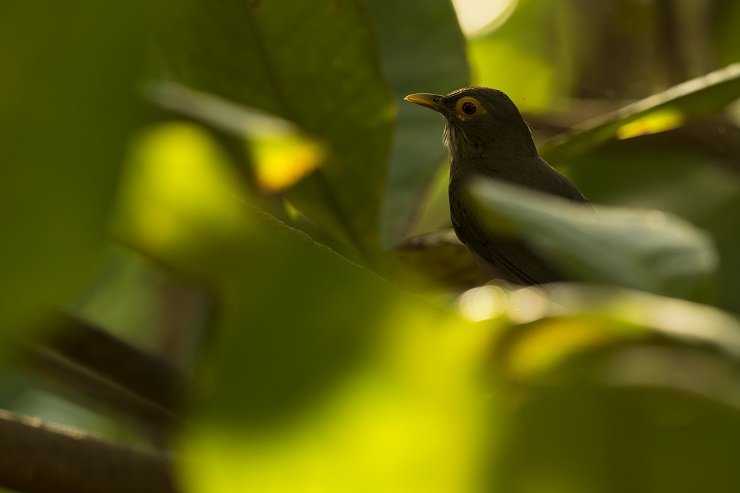
Spectacled Thrush in our almond tree.
The first sign of any positive effect was the appearance of several species of butterflies I hadn’t previously noticed. Over fifteen different butterflies frequent our yard now, but I’m certain there are more as I’m not that good with insects in general. I’ve noted at least nine species of reptiles and amphibians, even our native opossum and squirrel. Of course, various species of bats as well. Even the soil has altered its composition, becoming darker, the fruits which existed prior to the inception of this project have altered their texture and taste for the better. A tree which never bore any fruit for decades sprouted a single fruit a few weeks ago.
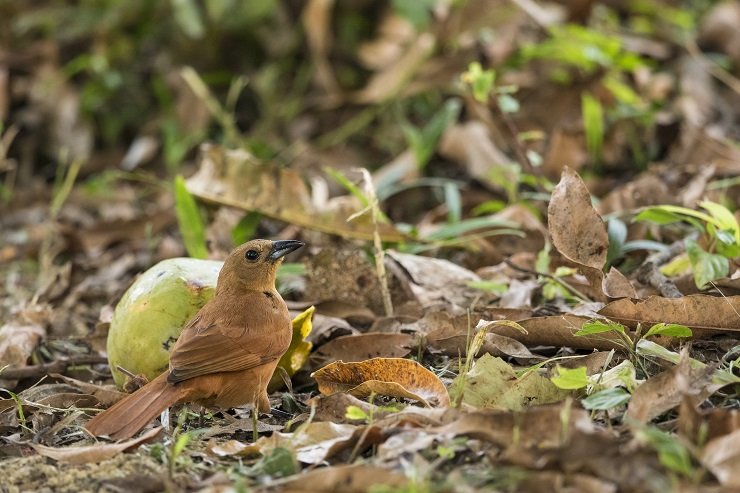
A White-lined Tanager (above) enjoys a fallen mango, while a Blue-gray Tanager (below) prefers to get its mango fix from our porch.
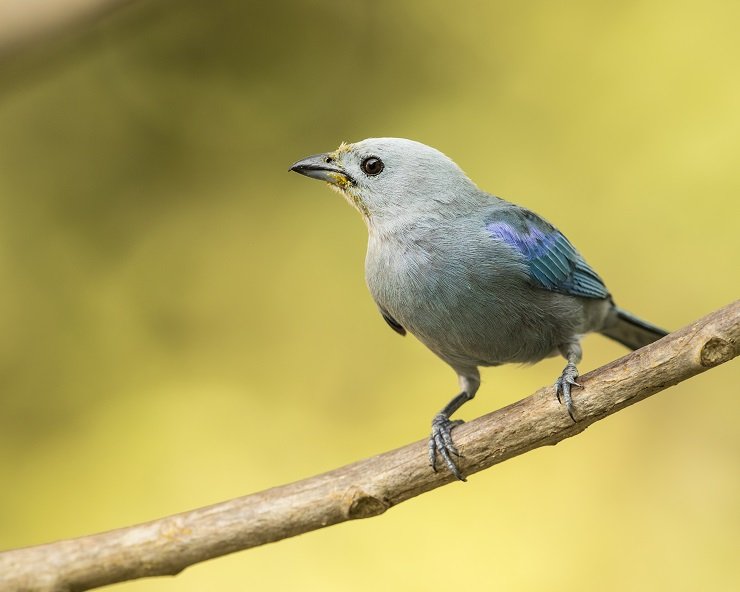
Birds have also benefitted. There was an empty lot of land next to us until 2010 – I remember seeing a distraught Blue-black Grassquit sitting on the fence as the bulldozer cleared the land. Thankfully, they now have a home here where they can court, build their nest, and raise their young. Along with several other species that have been nesting within our tiny yard: Spectacled Thrush, White-lined Tanager, Copper-rumped Hummingbird, and the ever-adaptable House Wren among a few others.
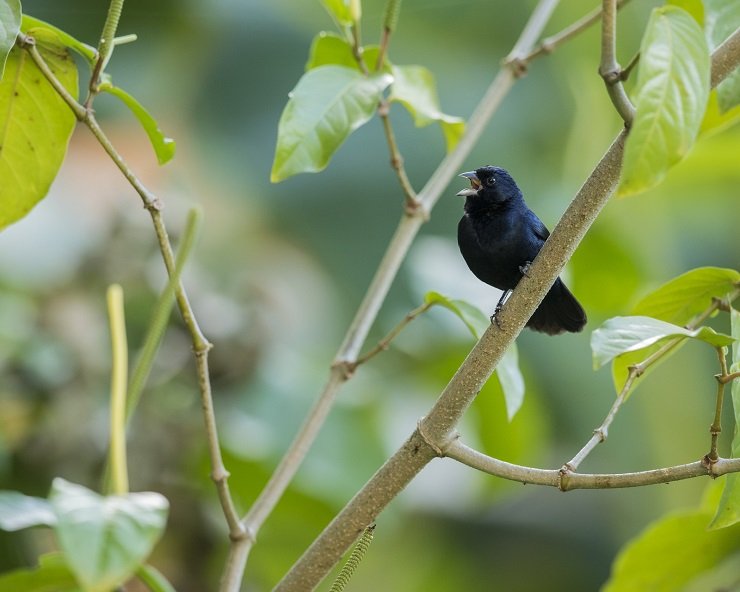
A male Blue-black Grassquit claims my backyard as his territory. I’m not in opposition to that.
The provision of housing and food is most gratifying, I have successfully spread this joy to one of my three neighbors, who now gleefully sends me pictures of the Cocoa Thrush family on his front porch, and Green Iguanas lounging in his avocado tree. Each year, I alert him to the arrival of our guest of honor – a female Yellow Warbler.
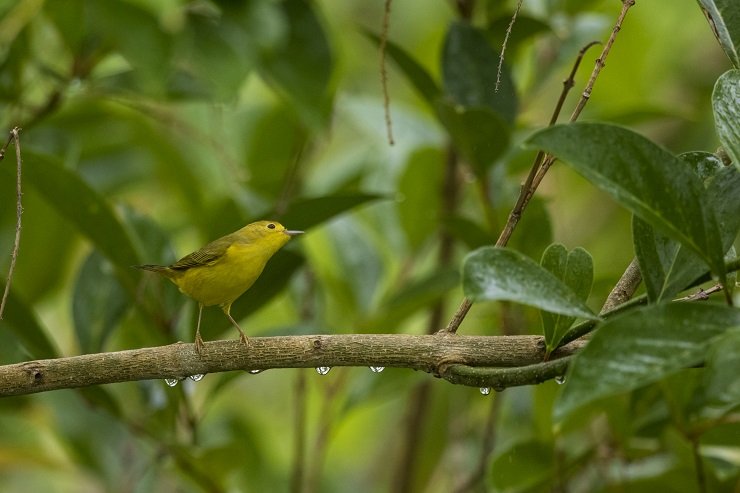
My friendly neighbor is understandably awestruck by the magnitude of the Yellow Warbler‘s mammoth journey.
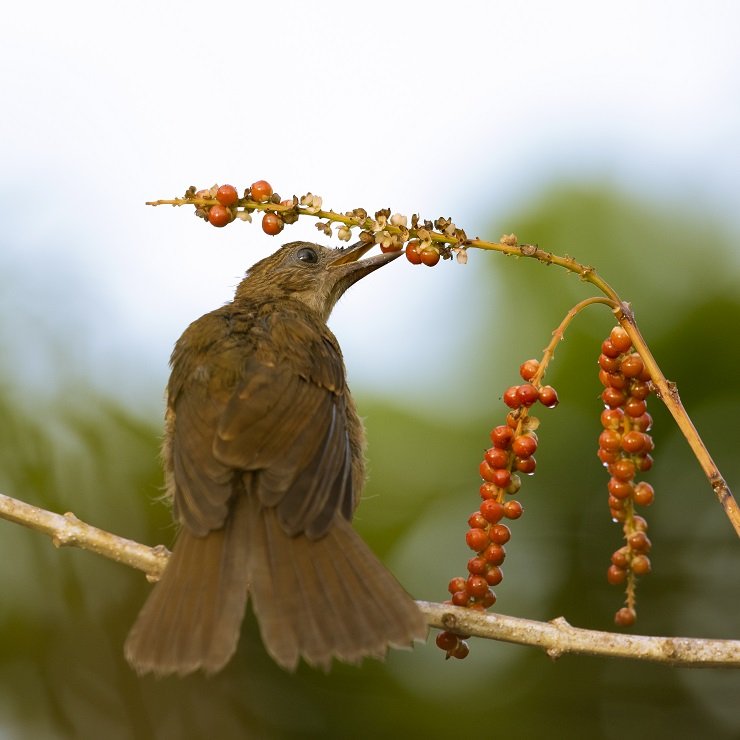
A hatch year Cocoa Thrush picks a berry from this tree that has flourished at our fenceline. Several species of birds enjoy these berries, hummingbirds, bees, moths and butterflies feed on the nectar and iguanas relish the fresh leaves.
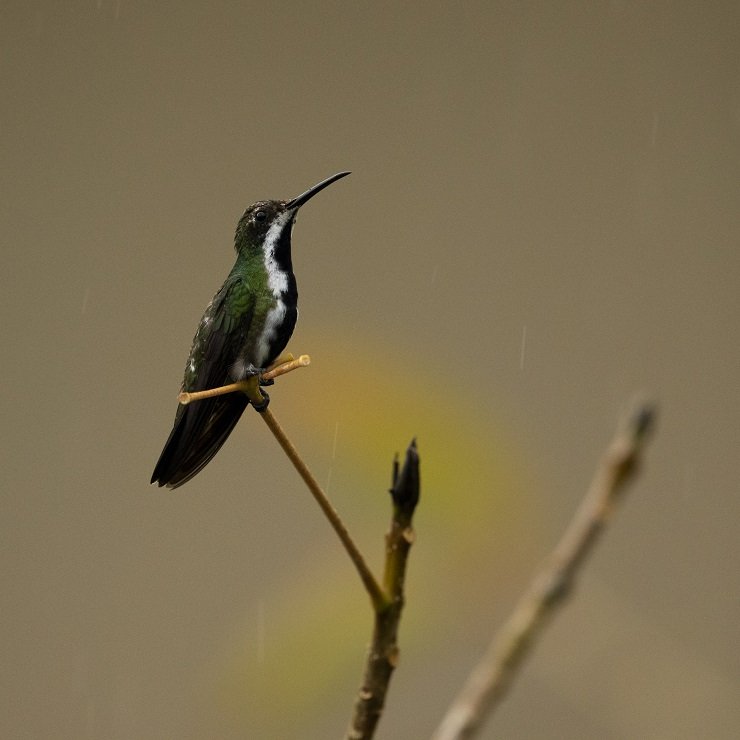
This immature Black-throated Mango perches momentarily on one of our trees, perhaps wondering if this is suitable territory for its future. I hope you choose our place!
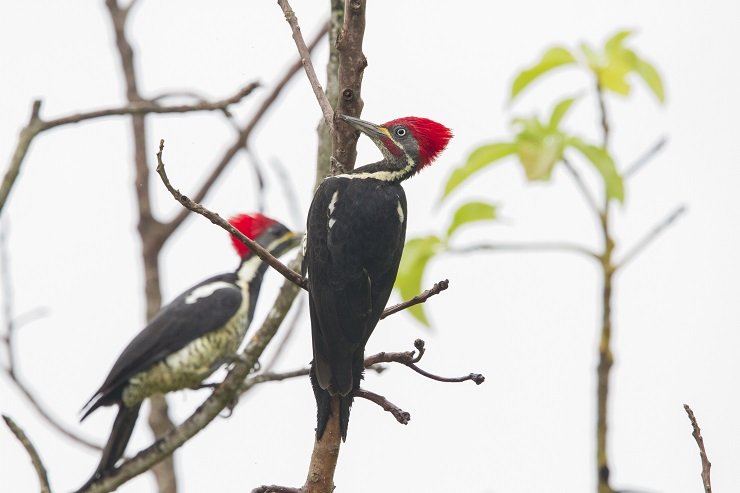
This pair of Lineated Woodpeckers loves the termite-ridden branches of my neighbor’s avocado tree.
Having been homebound for the last few months due to lockdown measures in T&T, my excitement peaks at hearing a Yellow-bellied Elaenia calling as I type this. Common birds throughout T&T, I only began seeing them in our yard quite recently, and regularly only over the past few days. The elaenia and its close relative, Southern Beardless Tyrannulet are nondescript to the eye, but the complete opposite to the heart.
At night, we keep our eyes out for the passage of the neighborhood Barn Owl, oftentimes a Tropical Screech-Owl would hunt insects from a low perch on our almond tree. Ghostly shapes high in the deep blue sky remain mysterious until a faint “wok” wafts down to the observer – Black-crowned Night-Herons.
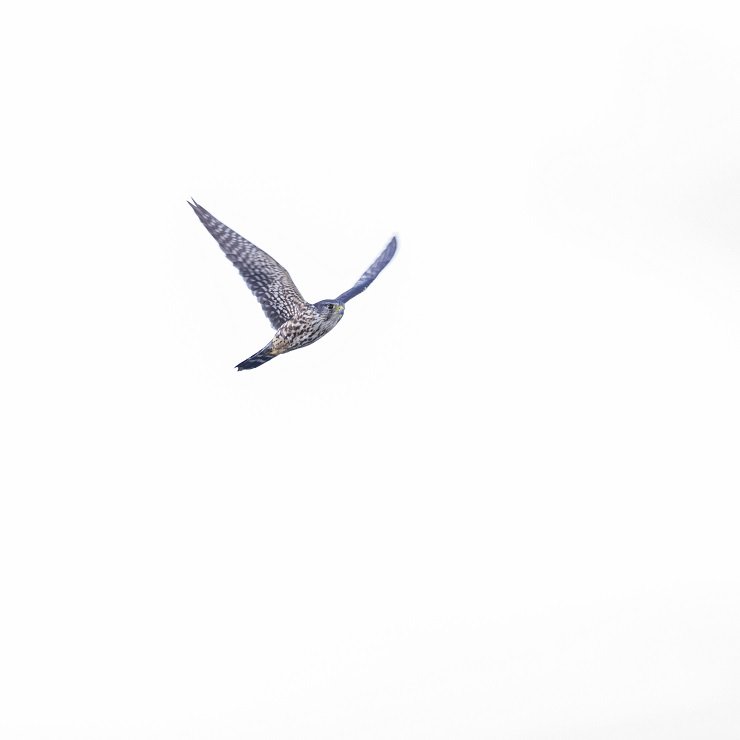
Sometimes this Merlin‘s mate comes to check him out, but for most of the northern winter he hunts solo.
Home life surely can be interesting and entertaining – especially so if we let it be. In a couple weeks I’ll be keeping my ears alert for the flight calls of incoming shorebirds, they shall definitely be followed by a Peregrine Falcon. Eventually our neighborhood Merlin shall also occupy some choice perches for a few months, terrorizing the ample population of Ruddy Ground Doves.
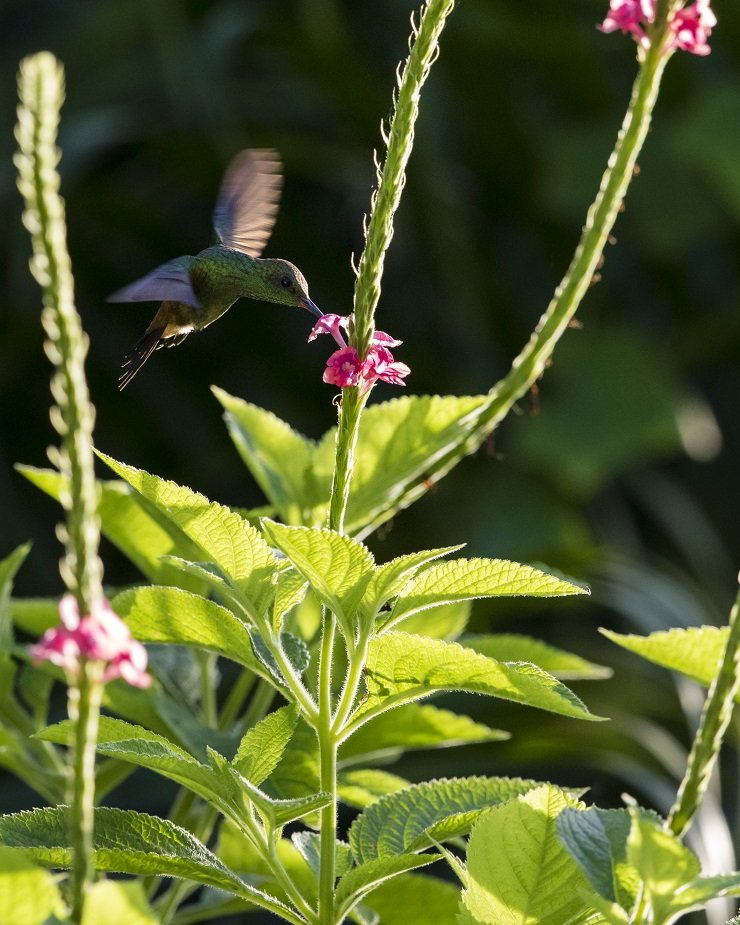
While I left much of the yard to its own devices, I deliberately planted some plants like this vervain to attract hummingbirds, like this Copper-rumped Hummingbird.
Life here is experiencing a boon in the face of encroaching human activity, at least in my immediate vicinity. It is my hope that they all can continue to benefit from this rewilding project; I shall gladly handle the complaints from human quarters.
I do miss going out – but I’m not sure how much!













A beautiful post! Residential lawns have always been one of humanity’s most ignominious blunders. When more of them disappear, it will be better for everything!
What a great project, Faraaz! It sounds like your property is a good size, and I hope it is. I’ve been planting all sorts of native trees on our church property with the same idea; most of the neighborhood is still wild or agricultural, but I want to have a bit of forest established before more people move in. And I hope my results can be as good as yours!
Your Cocoa Thrush tree looks like it might be a Jamaican Nettletree, which is a species I am trying to establish in our lot. It’s a very birdy tree.
Thanks gents. I detest lawns! Especially the treated ones. Lots of unnecessary concrete around here too. Where I live is quite small, actually. Probably about 8,000 sq. feet. I’ve put as much as I could in here. Honestly it’s the only way I’m coping with being away from the actual forest for so long.
I know the Trema tree, we have a sister species to the Jamaican Nettletree here that’s also extremely birdy. In fact we planted a few at a lodge we’re helping establish as a birding location only last week. This one is different though, but I’ll try to find out the name of it. Berries look similar but they grow differently. Happy you enjoyed this post!
Well, our house is on 2,800 sq. feet, and that’s considered a large lot here in Mexico! But our church has a full acre (1/2 hectare), so I’m taking advantage of my position as head pastor to get my rewilding on there.
Paul – the tree is Citharexylum spinosum, found out a few days ago. I have to be thankful for what I thought was small! It feels cramped as houses are far too close for comfort. Or maybe that’s just the hermit in me talking 🙂
The church is a good location to rewild – hopefully people do associate the natural bounty with that which is sacred!